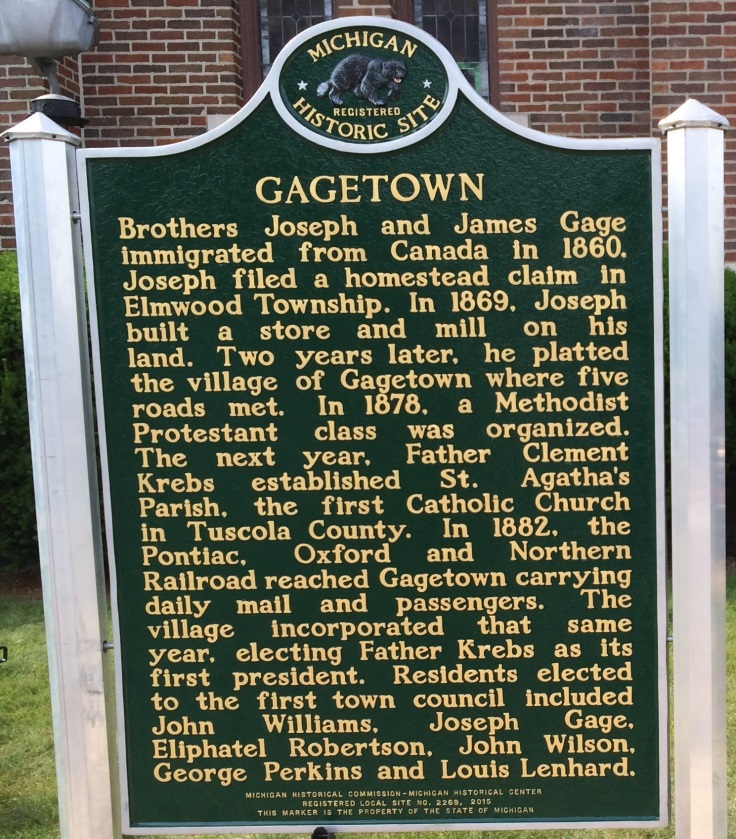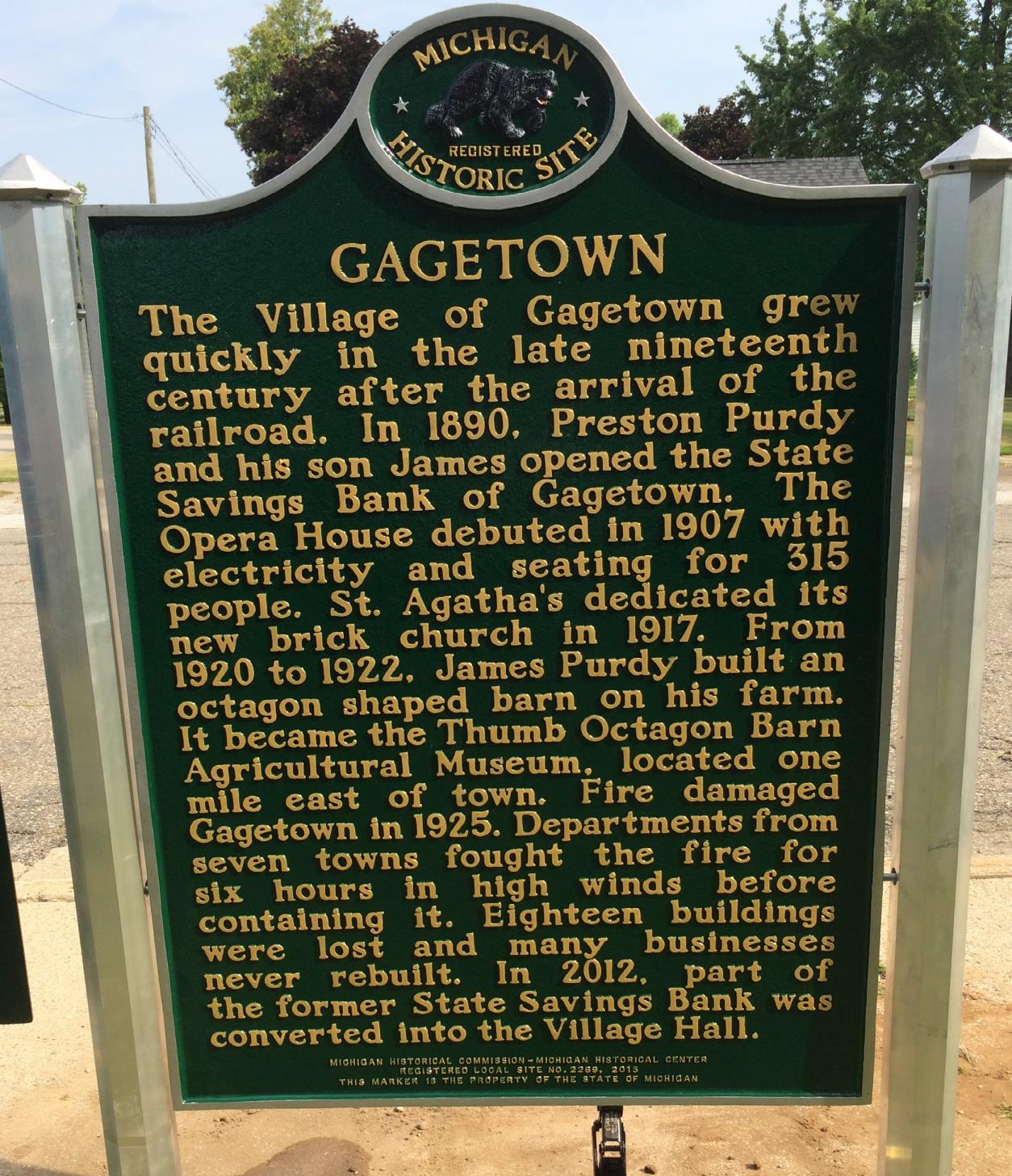Gagetown / Gagetown
Brothers Joseph and James Gage immigrated from Canada in 1860. Joseph filed a homestead claim in Elmwood Township. In 1869, Joseph built a store and mill on his land. Two years later, he platted the village of Gagetown where five roads met. In 1878, a Methodist Protestant class was organized. The next year, Father Clement Krebs established St. Agatha’s Parish, the first Catholic Church in Tuscola County. In 1882, the Pontiac, Oxford and Northern Railroad reached Gagetown carrying daily mail and passengers. The village incorporated that same year, electing Father Krebs as its first president. Residents elected to the first town council included John Williams, Joseph Gage, Eliphatel Robertson, John Wilson, George Perkins and
Louis Lenhard.The Village of Gagetown grew quickly in the late nineteenth century after the arrival of the railroad. In 1890, Preston Purdy and his son James opened the State Savings Bank of Gagetown. The Opera House debuted in 1907 with electricity and seating for 315 people. St. Agatha’s dedicated its new brick church in 1917. From 1920 to 1922, James Purdy built an octagon shaped barn on his farm. It became the Thumb Octagon Barn Agricultural Museum, located one mile east of town. Fire damaged Gagetown in 1925. Departments from seven towns fought the fire for six hours in high winds before containing it. Eighteen buildings were lost and many businesses never rebuilt. In 2012, part of the former State Savings Bank was converted into the Village Hall.

Plaque via Michigan History Center